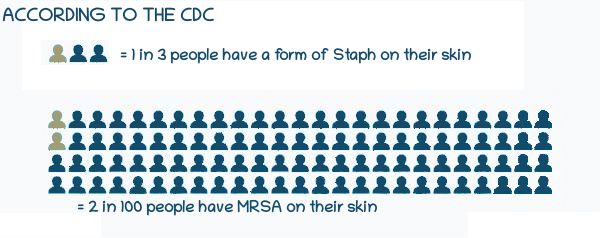A recent investigation in 22 Southern California skilled nursing homes revealed that 20 of the 22 had the MRSA germ present. MRSA, Methicillin-resistant Staphylococcus aureus, is a bacterium that causes staph infection. MRSA is resistant to several common antibiotics therefore making it difficult to treat.
Many people actually carry staph in their noses or on their skin with no symptoms. According to the CDC, 1 in 3 people has a form of staph present in their nose, and 2 in 100 people have the antibiotic-resistant strain MRSA, most without ever noticing. The trouble begins when the bacteria enters the body, often through an open wound, and infection ensues.
Unfortunately, MRSA can be contracted from something as simple as touching a surface with the bacterium on it. Depending on where the infection takes place, symptoms can range from skin sores and boils to infections in surgical wounds, the bloodstream, the lungs, or the urinary tract.
People with weakened immune systems are especially susceptible, and infections can be found around surgical wounds or invasive devices like feeding tubes or catheters. Therefore, MRSA thrives in hospitals and nursing homes where such scenarios are common. But MRSA is not a problem that is confined to medical facilities. Recently a San Diego Catholic school closed their doors temporarily because they received notification that a student with active MRSA had been on campus. Cases of MRSA staph infections are also popping up in college dorms and in gym locker rooms.
In order to clear up the infection, antibiotics are prescribed. Unfortunately, MRSA is resistant to many antibiotics, so only a select few are effective. A physician may prescribe a topical cream to help relieve the painful boils and lesions that may develop. Too, topical antibiotics can help to prevent further spread of the bacteria, and patients who are allergic to the oral form can sometimes handle the topical form. When MRSA gets into the blood or into bone, intravenous antibiotics may be administered.
Colonization occurs when the bacterium is present, but there are no symptoms. When this takes place, universal health precautions need to be observed in order to prevent the spread to others. For information on policies regarding MRSA in Board & Care and Assisted Living Communities, please see part 2.


2 thoughts on “MRSA in Nursing Homes – Part 1”